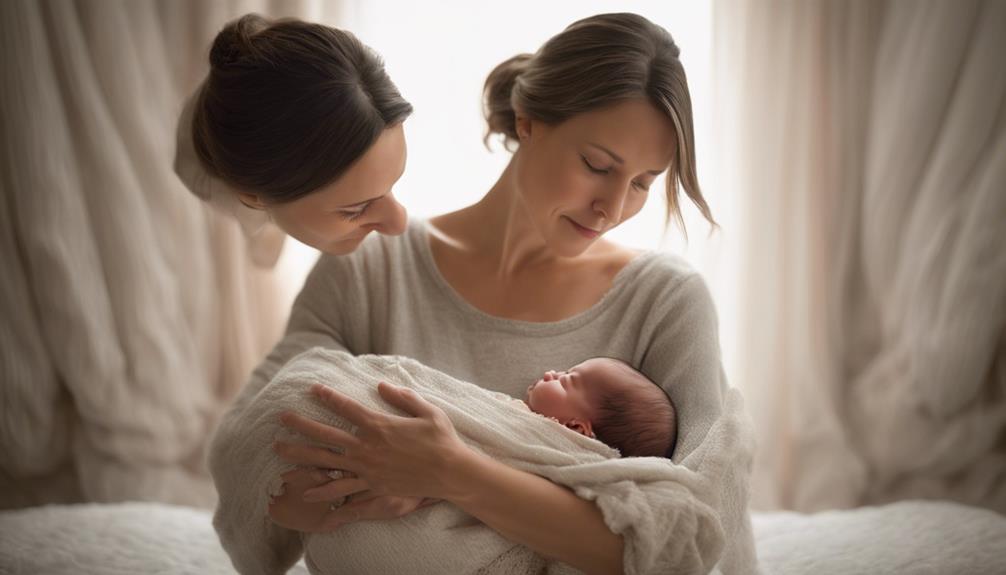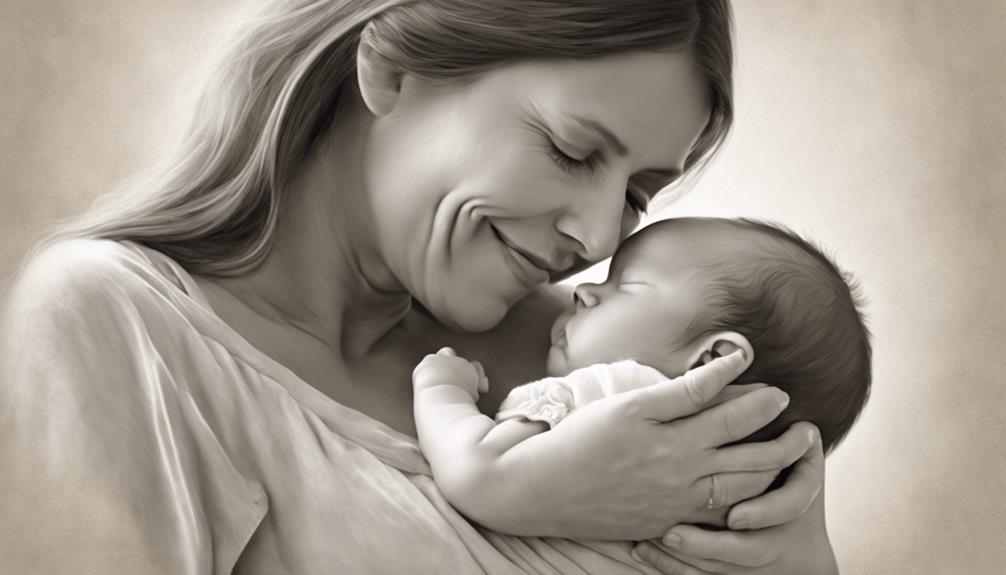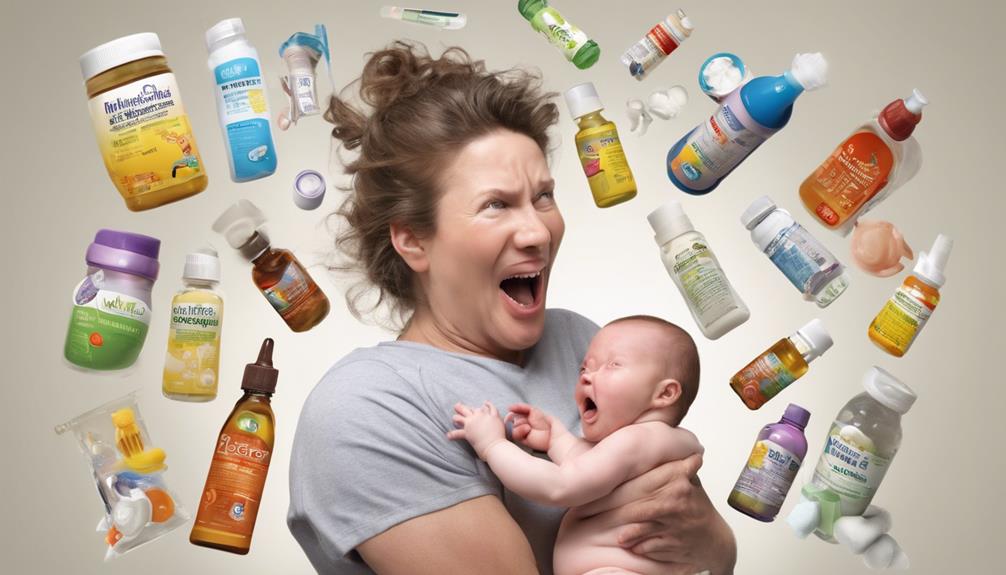When it comes to calming baby hiccups, simplicity often reigns supreme. While the cause of these tiny spasms may seem mysterious, the solution can be found in gentle gestures that offer relief without causing distress.
With a few subtle adjustments, you can help your newborn find comfort and peace. Remember, a calm and content baby is just a few gentle techniques away from hiccup-free bliss.
Key Takeaways
- Burping frequently helps release excess gas and prevent hiccups.
- Using a pacifier can soothe the diaphragm and calm the baby.
- Positional changes like holding upright can alleviate hiccups.
- Avoiding quick feedings and ensuring proper feeding techniques reduce hiccups.
Causes of Baby Hiccups
If your newborn is experiencing hiccups, it may be due to factors such as diaphragm irritation and quick or bloated feedings. These baby hiccups occur when the diaphragm contracts suddenly, causing the vocal cords to close, resulting in that characteristic 'hic' sound. Newborn hiccups are quite common and typically harmless, often resolving on their own without any intervention.
Understanding the causes of baby hiccups can help you prevent and manage them more effectively. Quick feedings or swallowing air during feeds can lead to hiccups, as can the Tonic Neck Reflex in newborns. To prevent hiccups, try feeding your baby in an upright position and ensuring they burp frequently during and after feeds. If hiccups persist, gentle remedies like holding your baby upright and patting their back softly can help alleviate them. By being aware of these triggers, you can create a more comfortable experience for your little one.
Burping Techniques
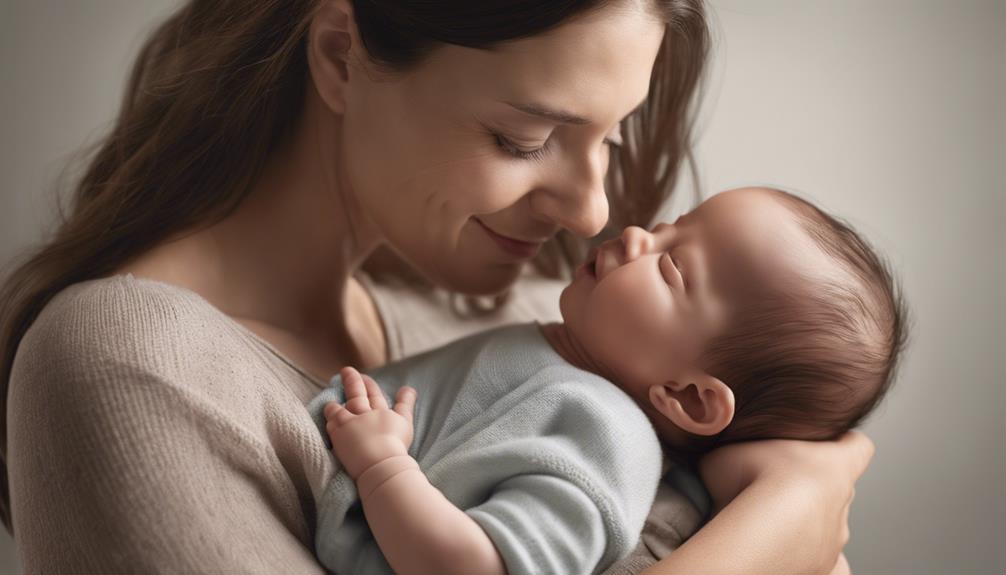
To guarantee your newborn's comfort and minimize hiccups, mastering effective burping techniques is key. Burping is vital as it helps release excess gas from the stomach, reducing the likelihood of hiccups in your baby.
If you're bottle-feeding, remember to burp your little one every 2-3 ounces to prevent hiccups during and after feeding. For breastfeeding, make sure to burp your baby when switching between breasts to minimize air intake and reduce the chances of hiccups.
These burping techniques are essential in alleviating discomfort caused by trapped air bubbles, which often lead to hiccups in newborns. By practicing proper burping methods, you can greatly contribute to preventing and managing baby hiccups effectively.
Your gentle and attentive approach to burping your baby will go a long way in ensuring their well-being and comfort after each feeding session.
Pacifier Soothing Method
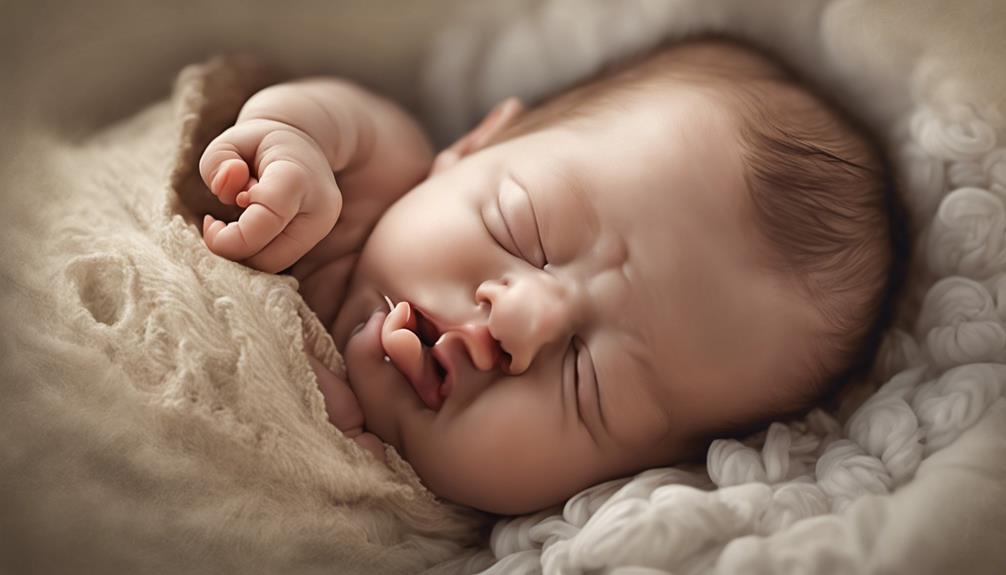
Using a pacifier can provide comfort and help soothe your baby's diaphragm, potentially stopping hiccups by engaging their sucking reflex. The sucking motion of a pacifier is not just soothing; it can also help regulate your baby's breathing and calm down the diaphragm muscles, aiding in alleviating hiccups. Offering a pacifier as a distraction can encourage relaxation, assisting in halting the hiccups gently. Though not a guaranteed solution, using a pacifier is a safe and effective method to potentially shorten the duration of baby hiccups without resorting to harsh interventions.
| Benefits of Pacifier Soothing Method |
|---|
| Provides comfort for the baby |
| Engages the sucking reflex |
| Helps regulate breathing |
Introducing a pacifier to your baby when they have hiccups can be a calming and gentle way to address the issue. This offers a sense of security and relaxation, which may aid in stopping the hiccups sooner. Remember, each baby is unique, so observing how your little one responds to this method is crucial.
Positional Changes
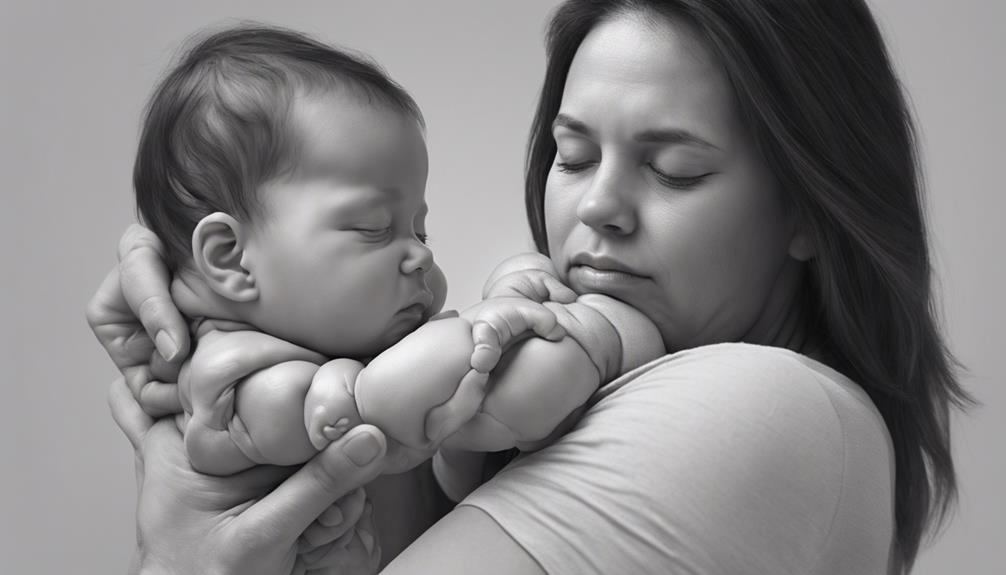
When your baby continues to hiccup, gently adjusting their position can often provide relief and help stop the hiccups. Try holding your baby upright against your chest or shoulder. The upright position can aid in reducing hiccups by allowing the diaphragm to relax.
You can also place your baby in a slightly inclined position by propping them up on a pillow during or after feedings. Keeping them calm and upright post-feeding can assist in digestion and prevent hiccups from occurring. Avoid laying your baby flat immediately after feeding to minimize hiccups.
Gentle movements like rocking your baby or shifting their position slightly can also help in alleviating hiccups. Remember, these positional changes are simple yet effective ways to soothe your little one and provide relief when hiccups strike.
Preventing Baby Hiccups

Burping your baby frequently during feedings helps release excess gas and prevent hiccups, ensuring a more important feeding experience. Feeding your little one in an upright position can also reduce the occurrence of hiccups by aiding in the digestion process. Offering smaller, more frequent feedings is another effective way to prevent those pesky hiccups that can interrupt your baby's peaceful slumber. Using proper bottle feeding techniques, such as choosing the right nipple size and making sure a secure latch, can prevent air intake, hence reducing the likelihood of hiccups. Remember, avoiding overfeeding is important. Allowing breaks for burping during feedings can help prevent and manage baby hiccups effectively. Below is a table summarizing these preventive measures:
| Preventive Measures | Description |
|---|---|
| Burping Frequently | Releases excess gas during feedings to prevent hiccups. |
| Feeding Upright | Reduces hiccups by aiding in proper digestion. |
| Smaller, Frequent Feedings | Helps prevent hiccups and important smoother digestion. |
| Proper Bottle Feeding | Selecting the right nipple size and technique can reduce air intake and prevent hiccups. |
Frequently Asked Questions
How Can I Soothe My Newborn's Hiccups?
To soothe your newborn's hiccups, try burping them, offering a pacifier, changing their position, and gently rubbing their back. Avoid adult remedies. These gentle methods can help release trapped air and relax your baby's diaphragm.
Is It OK to Lay Baby Down With Hiccups?
It's okay to lay your baby down with hiccups if they're comfortable. If your little one isn't fussy or distressed, don't worry. Trust your instincts, observe, and know that hiccups usually pass on their own.
What Is the Best Position for Baby Hiccups?
When baby hiccups strike, cradle your little one against your chest, easing the pressure on their diaphragm. Supporting their head and neck, keep them upright post-feeding, with gentle pats on the back for relief.
Do Hiccups Mean Baby Is Full?
Hiccups in babies don't necessarily mean they're full; they can occur due to various reasons. Understanding this can help you manage and alleviate them effectively. Focusing on addressing hiccups themselves rather than assuming fullness is crucial.
Conclusion
To sum up, remember that baby hiccups are common and usually nothing to worry about. By using gentle techniques like burping, offering a pacifier, changing positions, and rubbing their back, you can help alleviate your newborn's hiccups.
For example, Sarah noticed her baby's hiccups improved after trying different burping positions. Remember to prioritize your baby's comfort and well-being with these simple and safe methods.
